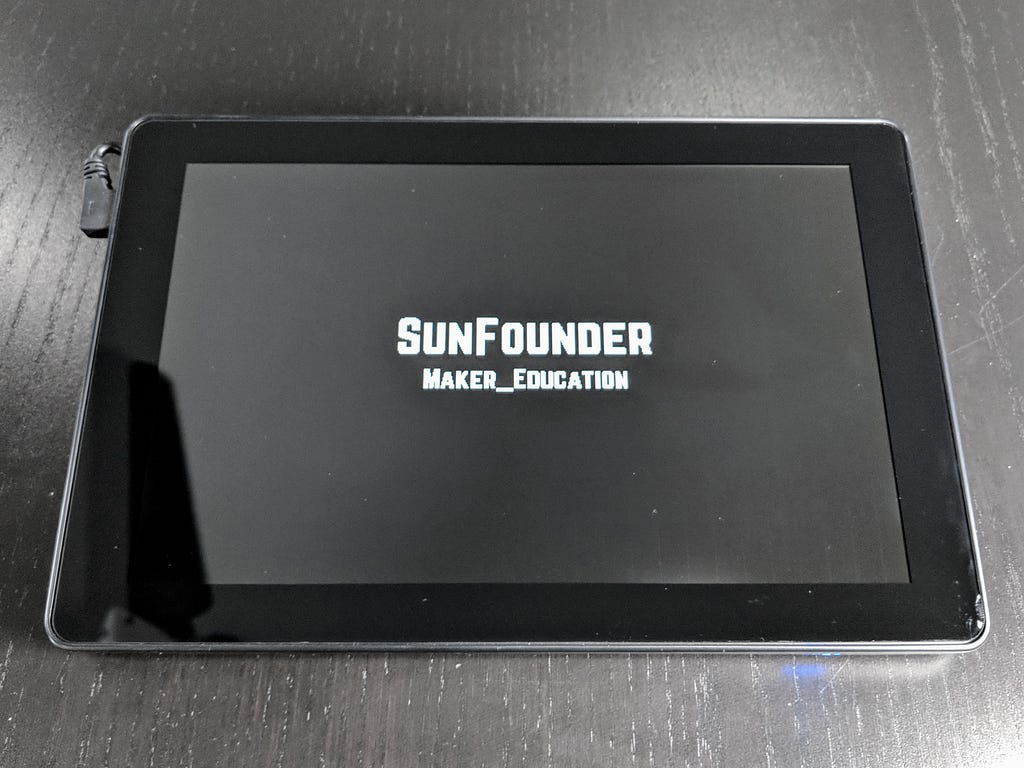Latest news about Bitcoin and all cryptocurrencies. Your daily crypto news habit.
RasPad Review: Turn Your Raspberry Pi Into a Tablet
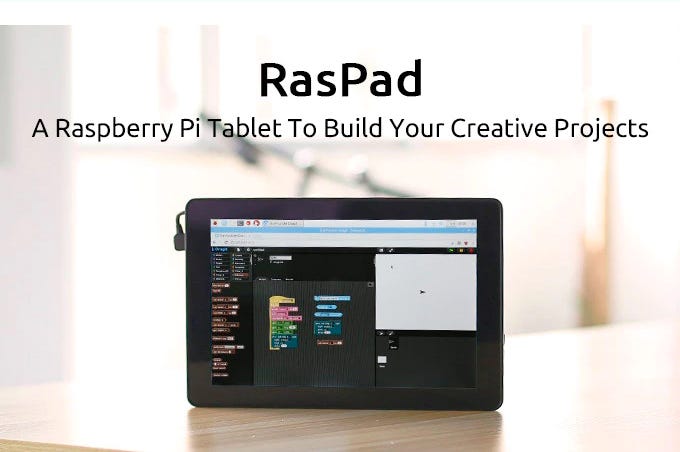 The RasPad turns the Raspberry Pi into a convenient, portable tablet. Disclosure: I received a payment and a RasPad Kit in exchange for writing this review, but these are my honest impressions of the experience.
The RasPad turns the Raspberry Pi into a convenient, portable tablet. Disclosure: I received a payment and a RasPad Kit in exchange for writing this review, but these are my honest impressions of the experience.
Smaller than a chocolate bar and cheaper than a night out, the Raspberry Pi created a whole new category of computing. It’s been six years since the original was released, and we’ve seen it used in everything from DIY projects to enterprise servers.
The Raspberry Pi is a great tool for learning about electronics and programming. But even a basic setup can be intimidating—an unwieldy bunch of peripherals and cables.
SunFounder, a company focused on maker education, wants to make things simple. They are wrapping up a wildly successful Kickstarter campaign for the RasPad, a portable Raspberry Pi tablet.
RasPad: What It Is
The RasPad isn’t meant to compete with iPad and other tablets. Instead, it taps into the Raspberry Pi ecosystem, giving digital creatives a portable, convenient tool for their projects.
The RasPad combines the Raspberry Pi, a 10 inch multitouch display, stereo speakers, and a 3-hour battery into a simple, elegant package.
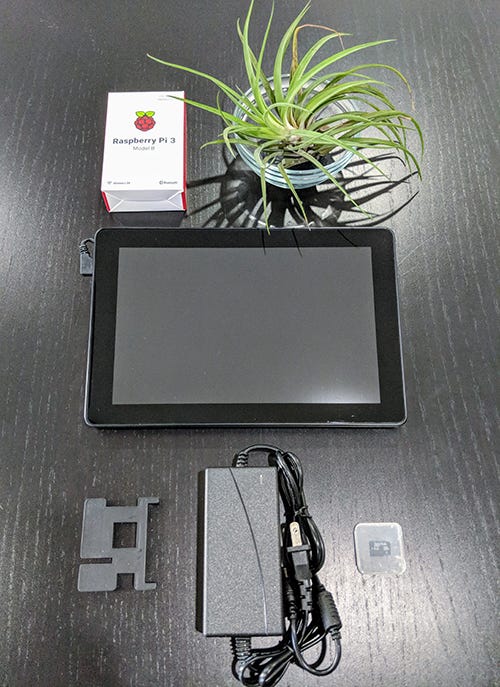 The RasPad Kit. The final version will ship with a Raspberry Pi 3 Model B+. Plant not included.
The RasPad Kit. The final version will ship with a Raspberry Pi 3 Model B+. Plant not included.
There are several different versions offered at different price points on Kickstarter:
- RasPad: The RasPad and power supply, but no Raspberry Pi or SD Card
- RasPad Kit: The RasPad, power supply, Raspberry Pi, and SD Card
- RasPad Beginner Kit: Everything in the RasPad Kit, plus the Sensor Kit
- RasPad x uArm with Vision Camera: Everything in the RasPad Kit, plus a uArm Robotic Arm and Vision Camera Kit
If you elect to get the RasPad Kit (upgrade option), it comes pre-installed with the Raspbian OS and some beginner-friendly but powerful applications. For those looking to get started with the Raspberry Pi, this is one of the best options.
Setup
The rest of this review covers the RasPad Kit, one of the upgrade options. The RasPad Kit comes with everything you need to get a Raspberry Pi up and running quickly. In addition to the RasPad unit itself, it includes a Raspberry Pi 3 Model B+, power adapter, and MicroSD card with Raspbian pre-installed.
Setup is simple. After installing the SD card, insert the Pi into the RasPad tray. Connect the USB power cable, HDMI cable, and USB peripheral cable. Attach the Pi cover.
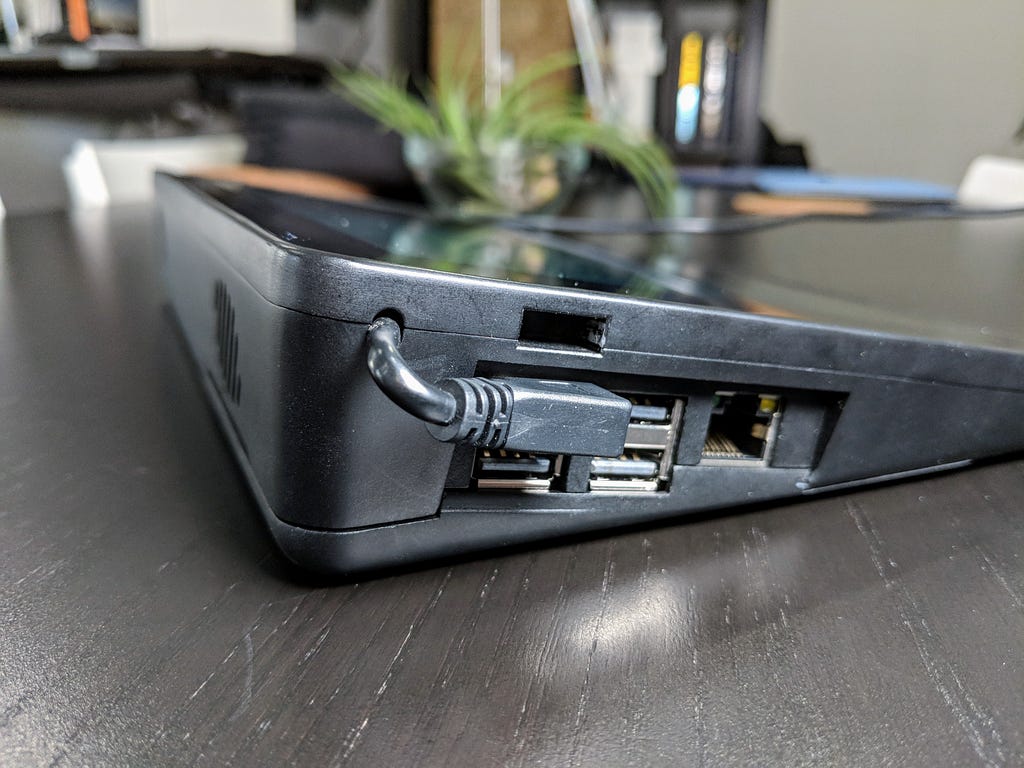 The USB peripheral interface must be connected to the Pi to use the touchscreen.
The USB peripheral interface must be connected to the Pi to use the touchscreen.
Plug in the power supply, and hold the power button down on the bottom right of the unit. Within 30 seconds, Raspbian will be fully booted and ready to use.
Hardware Impressions
The build quality of the RasPad surprised me. Although the plastic shell doesn’t have quite the same level of fit and finish as an iPad, it feels very sturdy and well-made.
The 10 inch IPS multitouch display is bright and vibrant. It’s a little dimmer at max brightness than an iPad but more than sufficient for any indoor application. The color quality is very good for something in this price range.
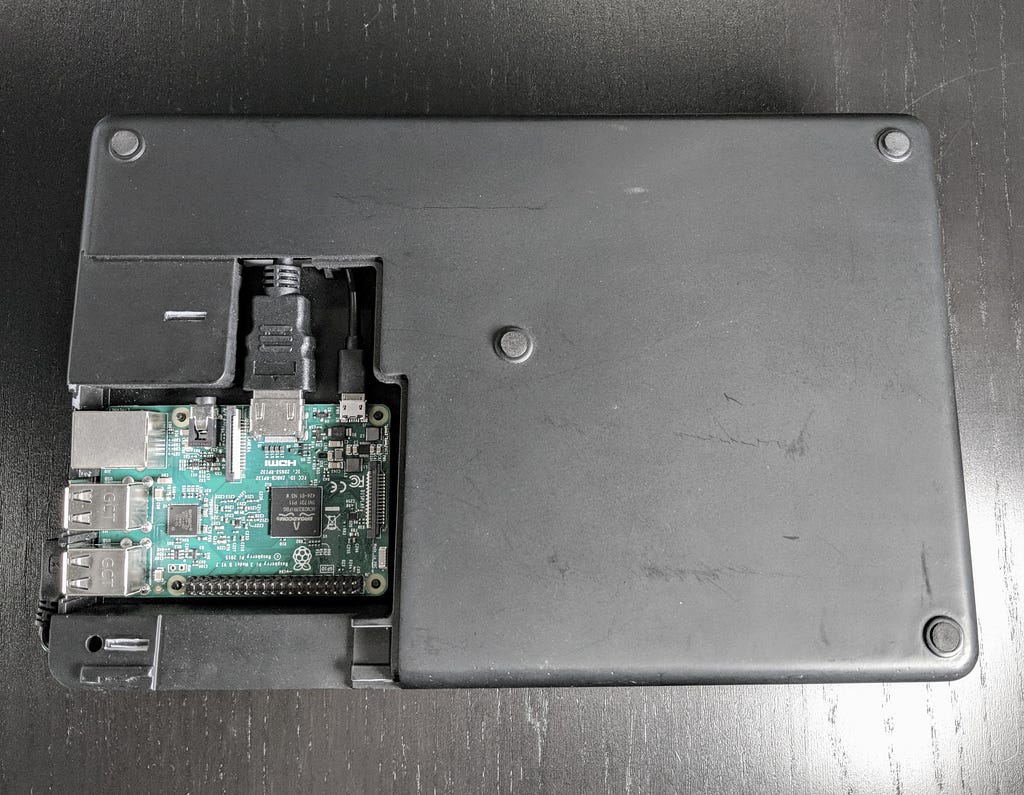 Installing the Pi in the RasPad. I was told the plastic imperfections will be limited in the final version.
Installing the Pi in the RasPad. I was told the plastic imperfections will be limited in the final version.
The stereo speakers are similar to what you would find in most laptops. Not as good as a hi-fi system, but good enough for many applications. If you need better quality sound, you could connect to a Bluetooth or wired speaker.
The rear of the unit includes a slot to pass through connections to external hardware modules.
The battery charge level is indicated by four LEDs on the front of the unit. Additionally, a lightning bolt icon is displayed on the screen when charging.
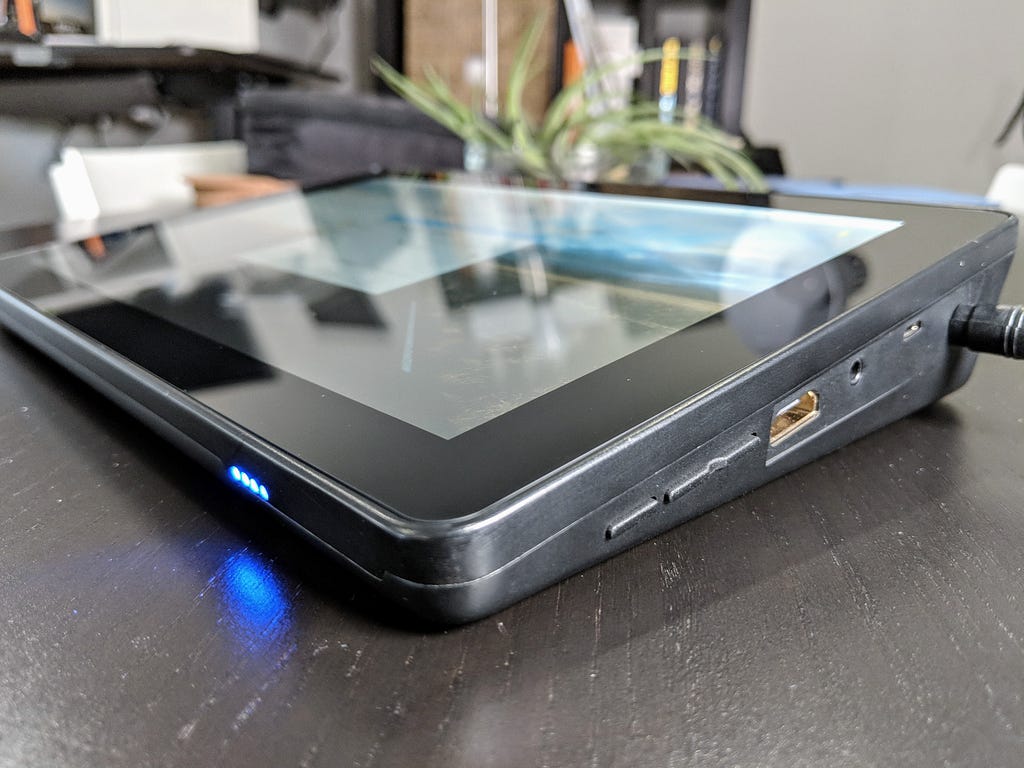 RasPad controls and battery indicator.
RasPad controls and battery indicator.
The three buttons on the bottom right of the unit control power, volume, brightness, and the screen lock. Operation is similar to other tablets.
Using the RasPad
My review unit came with the Raspberry Pi 3 Model B, but the final version will ship with the Model B+. Running a full desktop OS is resource-intensive on the Pi, but it handles most tasks well.
Apps like Chromium, Scratch 2, Terminal, and LibreOffice Writer all load and run surprisingly quickly. The only exception I noticed was Sonic Pi, which took almost a minute to open but performed well once running.
I connected the Pi to my Wi-Fi network without trouble. Although my review unit only supported 2.4 GHz networks, the final version will support 5 GHz networks.
The touchscreen works well in many instances, but the Raspbian OS is not the best match for touchscreen-only operation. Although you can pinch-to-zoom in many apps, other apps are not touch-optimized. The on-screen keyboard works but does not support multitouch (you can’t hold down shift and press a letter). It is difficult to accurately press some small UI elements, such as exit and minimize buttons.
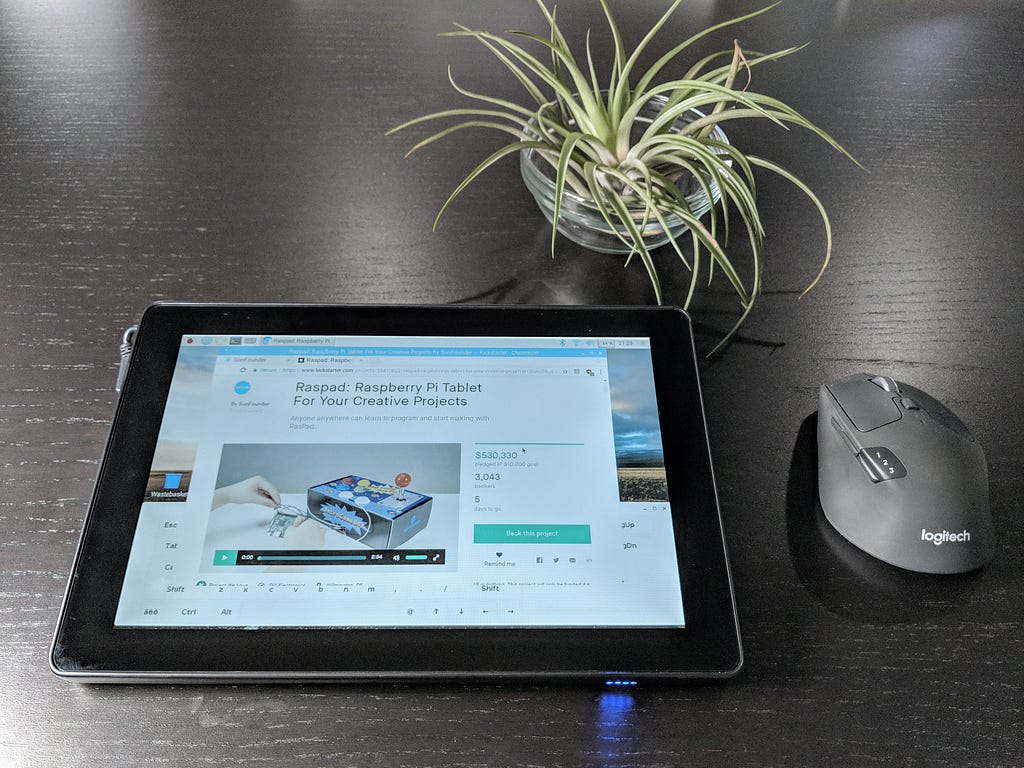 Using the RasPad with the onscreen keyboard and a Bluetooth mouse.
Using the RasPad with the onscreen keyboard and a Bluetooth mouse.
Unless you need to type a lot, I think the onscreen keyboard is fine. But I suggest you get a mouse, either USB or Bluetooth. I paired my RasPad with a Bluetooth mouse, and the experience was much smoother thereafter.
Because the RasPad has a battery, your project is no longer tethered to a desk. Although your specific task might involve some connections, the RasPad is more portable than any other Pi setup I’ve seen. And because it includes a real web browser and office applications, you can use it as an everyday computer.
Learning to Program with Scratch
One of the trickiest parts of learning to program is keeping track of syntax. Scratch, a visual programming language from MIT, gets rid of the code in favor of drag-and-drop blocks.
What can you do with Scratch? You can create games, music, animations, and interactive interfaces. You can even connect sensors and peripherals, such as those offered in the Sensor kit, to bring your programs to the real world.
The SunFounder team has extended Scratch with Dragit, which enables easy touchscreen manipulation of blocks. Dragit makes RasPad the ultimate Scratch tool.
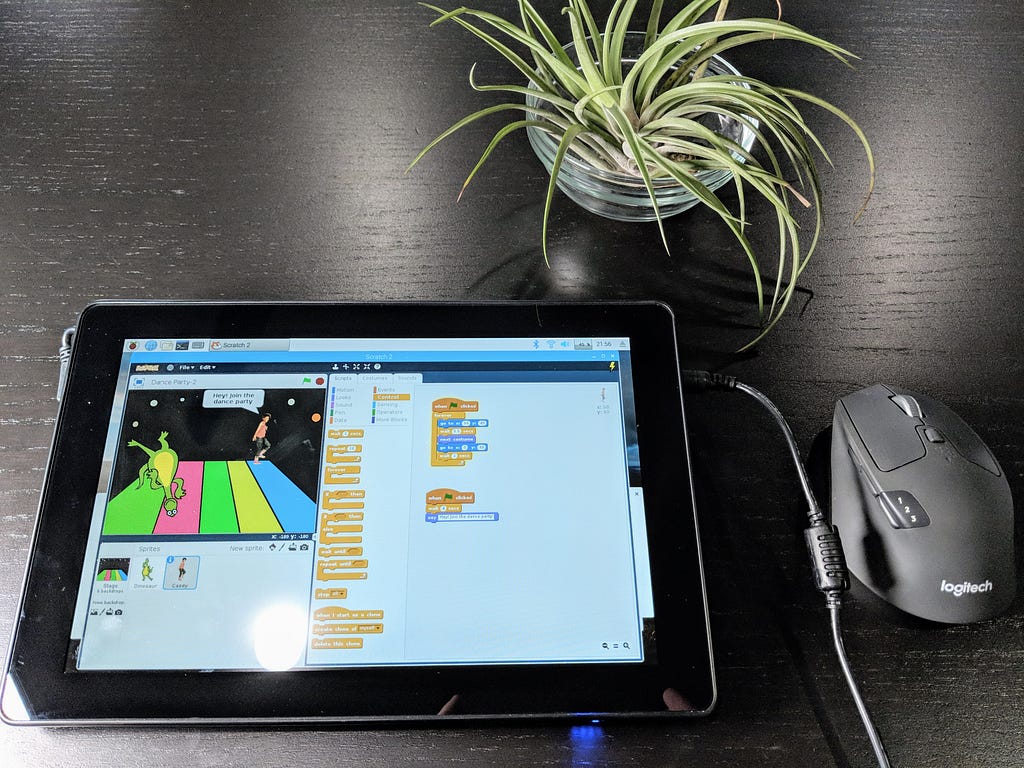 Working on a Scratch interactive dance floor project.
Working on a Scratch interactive dance floor project.
Some More Project Ideas
The RasPad opens the door for a bunch of DIY projects. To name just a few:
- Interactive art
- Weather stations
- Drone controls
- Gaming
- Camera systems
- Robotics
- Lighting controls
- Entertainment hubs
- Alarm systems
- Sensing
- Live-coded music
SunFounder sells an optional Sensor Kit that includes peripherals to enable many of these projects. The package is a great value compared to sourcing all the parts separately.
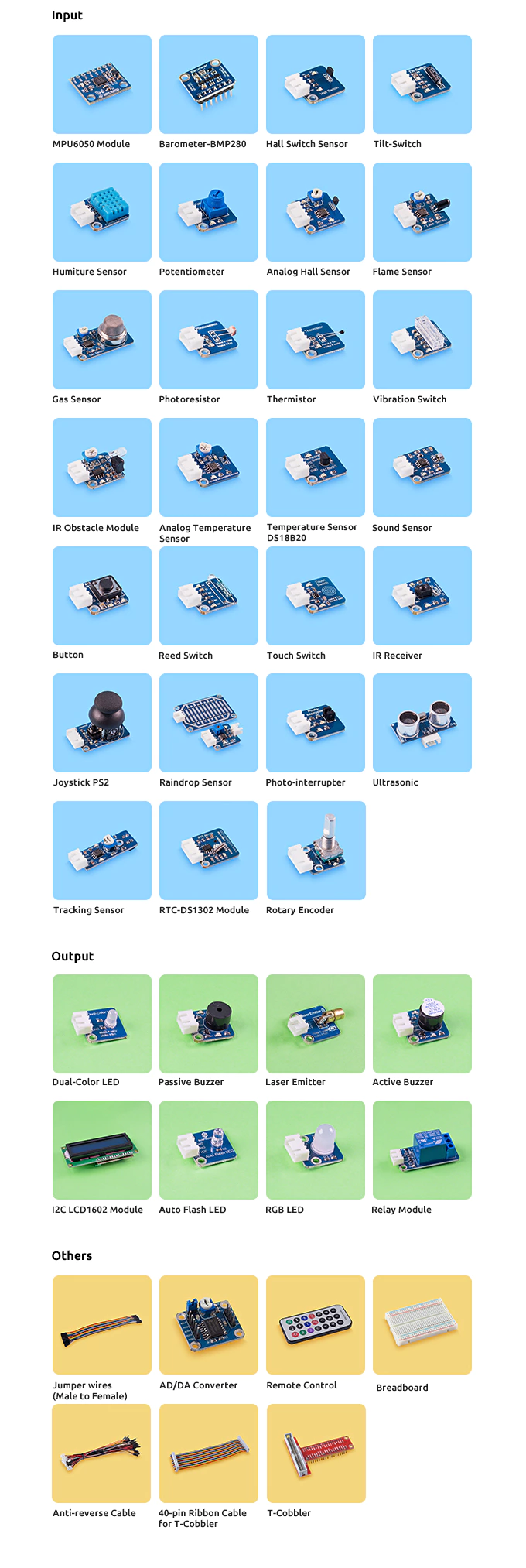 The optional Sensor Kit expands the number of possibilities for projects.
The optional Sensor Kit expands the number of possibilities for projects.
The side channel in the RasPad makes it easy to connect these peripherals without modifying the case. Especially convenient is the 40-pin ribbon cable and T-cobbler, which are a clean way to connect breadboard components to the RasPad. You also still have access to the camera connector.
Verdict
The Raspberry Pi was already a game-changer, but combined with the RasPad, digital projects are easier than ever. The RasPad is a must-have for anyone looking to learn about the Raspberry Pi. Experienced digital creatives can also benefit from the RasPad’s convenient package and improved portability.
Pre-order yours on Kickstarter today.
Thanks for reading. If you liked this article, please hit the clap button above and share with your friends. I also encourage you to subscribe to my YouTube channel for more tech content.
Disclosure: I received a payment and a RasPad Kit in exchange for writing this review, but these are my honest impressions of the experience.
RasPad Review: Turn your Raspberry Pi Into a Tablet was originally published in Hacker Noon on Medium, where people are continuing the conversation by highlighting and responding to this story.
Disclaimer
The views and opinions expressed in this article are solely those of the authors and do not reflect the views of Bitcoin Insider. Every investment and trading move involves risk - this is especially true for cryptocurrencies given their volatility. We strongly advise our readers to conduct their own research when making a decision.
